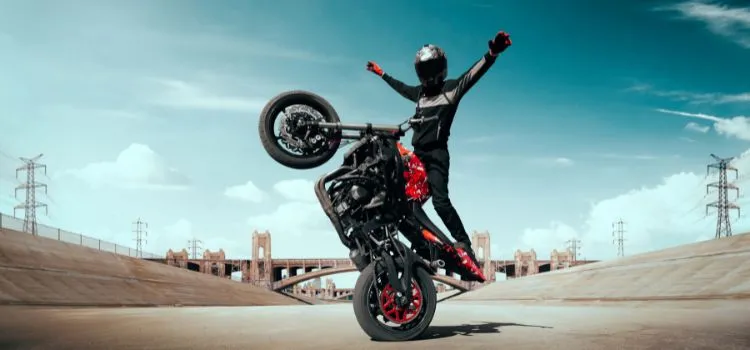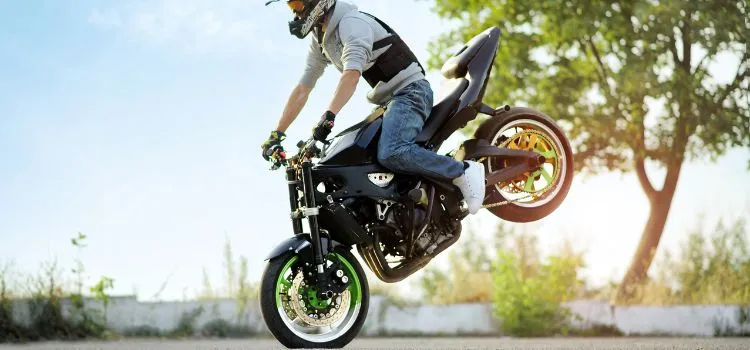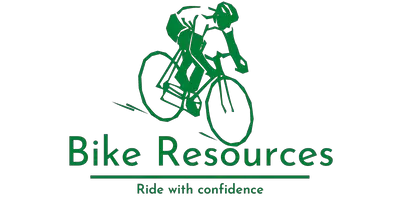How to Wheelie a Big Bike | Wheelie like a Pro!

Do you find it hard to wheelie on a big bike? Nothing is hard. It is easy to follow the basic steps of how to wheelie on a big bike and practice. Balancing and controlling a bike is the key to performing a wheelie like a pro.
Table of Contents
Short Answer
How to wheelie a big bike? Wheelie is of different types. You can perform a wheelie with a pedal or manually. The best location to practice with safety gear and properly follow the legal rule will be better for you to inspire people as a rider and as a good citizen.
This article will help to give proper guidelines for performing a wheelie along with the benefits of its safety precautions and rules and regulations.
How to Wheelie a Big Bike?
Wheelie on big bikes is all about control and balancing the bikes, especially while performing a wheelie. You can perform two types of wheelie on big bikes before discussing them. Please look at the equipment you need before wheeling a big bike; it is part of learning how to wheelie a big bike.
Things Need to Perform Wheelie
To perform a wheelie on a big bike like a pro, consider the following equipment you need to have before riding on a big bike which is as follows;
- Safety gear like knee and elbow pads, helmets, gloves, and proper clothing.
- Suitable bike, which is right up to date and very well maintained
- A safe and open space to practice, and you won’t get hurt if you fail to perform wheelie or fall.
- A tool kit that can help to fix your big bike; in any case, your big bike gets tired.
Keep in mind the above points before going on an adventurous ride, folks.
How to Wheelie Like a Pro

Two ways of wheelie are explained in the following paragraphs, which may help you to get to the point where you can perfectly perform both, but begin with the most suitable type of wheelie. Multiple types always bring choices, so you can choose and decide which is more comfortable for you.
Steps to Perform Pedal Wheelie
Follow the simple and easy steps very carefully to get to the key point, balancing and controlling, as mentioned above.
Step 1: Safety Gears:
There is no question about whether to wear a helmet or not. Forget the wheelie; you must wear a helmet while riding a motorbike on the street. So wear a helmet and set a good example of careful riding and taking the safety rules seriously.
Step 2: Terrain Type
The right type of terrain is suitable for you to practice wheelie. Always start with a grass surface or a flat one with dirt: no pebbles or gravel. If you are riding a mountain bike, dirt bike, or any other bike that comes under the heading of a big bike, perform in uphill areas.
Step 3: Adjustable Seats
Set the seat based on central gravity. Lower the seat down, the better your center of gravity will be. This wheelie will be properly seated; you don’t have to stand up to pull the handlebars. Ensure to be properly settled on the saddle and cannot slip off.
Step 4: Suitable Gear
The medium gear is the best to practice wheelie. Start with low gear, then low to middle gear is perfect for the wheelie. Too high or too low will make you put in more effort, which is not a good idea. So gear should be according to your track type and abilities where you have the suitable fore to pedal.
Step 5: Positioning
11 o clock and 5 o’clock positioning are the best to place the cranks. So that you can pedal as forcefully as possible. Use most of your leg muscles and initiate with an 11 o’clock thrust.
Step 6: Start Shifting your Weight
With the help of bending your arms, shift your weight forward.
Step 7: Lifting the Front Wheel
Lean forwards and cross the rear wheel. Do it sharply and fast with strongly hitting the pedal. Don’t pull back the handlebars and strengthen your arms. The front wheel will lift.
Keep pedaling at the same speed because the front wheel will come down if you slow down. If you feel like you are losing your balance or moving on one side, place your hands on the rear brake.
Step 8: Vertical Balance
Balancing is the key. Maintain and control the balance vertically and on both sides. You can achieve balance by extending your arms, spreading your knees, or turning the handlebars in the opposite direction of the bike.
Step 9: Bring Back the Front End
Straight the bike before lowering down the front end. Always come at in slower and more comfortable speed. Take your time hitting the lifted front wheel on the ground. Keep your body weight at the center. Don’t shift it back.
Steps to Perform Wheelie on a Big Bike Manually

Learn how to wheelie manually on a big bike. Follow the simple rules and practice;
Step 1: Safety Gears
Safe yourself by wearing safety gear from serious and life-threatening injuries. Don’t you want to fall so comfortably that It doesn’t feel like falling?
Step 2: Speed of your Big Bike
Start with medium speed, which you can balance; you can try out the flat or soft downhill slope. Keep practicing the balance to perform wheelie downhill with moderate acceleration. You don’t have to pedal on a downhill slope, so your bike will stay steady if you are riding a mountain bike or a big dirt bike.
Step 3: Positioning
Start positioning by placing the cranks at 9 o’clock and 3 o’clock. Put your feet on the pedals. With the help of your knees, stand on the pedals and bend a bit. Keep your weight at the center. If your cranks are going backward, then don’t pedal.
Step 4: Lift the Front Wheel
Move forwards and over the handlebars to lift the front wheel. Then lean backward. It is a helpful technique to lift the front wheel by leaning backward and raising the handlebars. The feet should be parallel to the pedals, and the arms should be straight. The body’s positioning is important while lifting the front wheelie; it should make the U shape with straight arms and legs while leaning back.
Step 5: Balancing
Balance the weight of your body over the rear wheel, straighten your arms and legs, and maintain the balance.
Step 6: Keep your Front End Lifted
Your front wheel should be I and ½ feet off the ground. Maintain your coast and balance as long as you can. Spike the rear brakes and come down without falling. Move your hips backward and hit the pedals outwards to avoid slipping the wheelie forward.
Usually, the hurdles of the ground are tree branches and rocks, at most a few inches. Try to balance the weight over the back wheel to keep your front wheel off the ground.
Step 7: landing
Gently come down by spiking the rear brakes or moving the center of gravity forward. Stay out of hurdles during the wheelie. Make sure to land safely on the safe path without any obstacles. Don’t, I repeat, don’t land on any branch or rock. You will get hurt.
Now, after learning how to wheelie a big bike, learn some tips for riding and performing a successful wheelie.
Tips to Perform a Successful Wheelie

- Balance the sideways quickly, or else, if you want, the damage would be irreversible.
- Balancing sideways can be done by feet and knee
- Flat pedals are good for wheelie
- The front end of the big bike should face forward when you land.
- If you are doing better to keep up the balance, if your feet are on the pedals, it would be harder to use the foot.
- Try to perform a wheelie on a bit of inclined ground as a beginner.
- Hop off your back and make your learning accessible.
- Keep finding the right balancing point and practice. The key to every success is the practice. The more you practice, the more you can perform like a Pro!
Key Point
- Keep the weight of your body on the handlebars when you land.
- Try to pedal slowly, it will result in the proper handling of your big bike, and once you lose control, you won’t be able to control the movements.
Benefits of Wheelie on a Big Bike
Following are the few benefits of the wheelie on a big bike
- By performing a wheelie, the most important skill you learn is the skill of balancing, controlling, and practicing the stunt. It helps to maintain brain activity and brings a bit of calmness and patience to your character.
- Once you master the art of wheelie, you can do it confidently, and people will inspire you; that’s how you can set a good example, especially for young riders.
- By lifting the wheel, you can skip the hurdles coming your way.
- Wheelie requires more attention and focus; it allows handling other matters with the same conviction.
- Finally, you can groom in style and personality.
Along with the benefits, as a good rider and responsible citizen, you always follow the rules and regulations you live in. Never practice in public parks or parking lots; private ones are the best.
FAQs
How Can I Prolong My Wheelie?
If you want to make your longer, you need to be more conscious of your balance. It’s the game of maintaining a balance between pedaling, keeping the front wheel up, and being conscious of failing by applying the back brakes. Once you master this technique, you can prolong your wheelie as long as you want to.
Is It Possible to Wheelie Without a Gear?
Gears are important to control the bike’s speed and enhance the wheelie experience; yes, you can perform the wheelie without gears, but I would never recommend it do so. It is not good for you and anyone else who follows you.
Is It Simple to Perform Wheelie?
Everything is hard at first; nothing comes easy. Practice, patience, and passion for mastering any skill will make performing easier. Other factors definitely help to make the task easy, like the physical condition of the bike, the skills a rider possesses, and many other factors, but it’s never about the bike. It is always the rider!
Conclusion
In conclusion, performing a wheelie like a pro is fun in itself. It’s hard to perform at first, but practice makes a man perfect. Along with that, one of the most important factors in learning how to wheelie a big bike is taking care of safety gear.
Keep checking before wheelie to take each safety precaution step, and follow the rules and regulations you are in. Never risk your life for a few enjoyable moments; it is not worth it. Set a good example of performing stunts with an impression of a careful rider. Careful riding and wheelie are always worth the risk.

Im extremely pleased to find this site. I need to to thank you for ones time for this fantastic read!! I definitely loved every bit of it and I have you saved as a favorite to check out new things on your website.
דירות דיסקרטיות במרכז
That’s wonderful to hear! Thank you so much for your kind words and for taking the time to explore our site.
We’re delighted that you had such a positive experience with our content and that you’ve chosen to bookmark us as a favorite. It’s our goal to provide valuable and engaging reads for our visitors, and knowing that you loved every bit of it is truly rewarding.
We’re committed to continually delivering fresh and informative content, so you can always look forward to new and exciting things on our website.
If there are specific topics you’d like us to cover or if you ever have questions or suggestions, please feel free to reach out. Your feedback is invaluable to us.
Once again, thank you for your support, and we’re thrilled to have you as a part of our community. We can’t wait to share more with you in the future. Happy exploring! ??